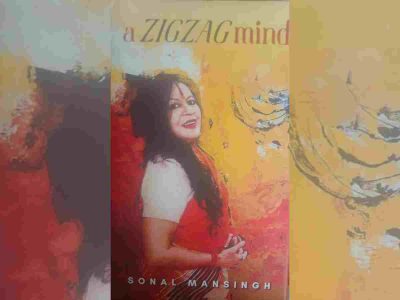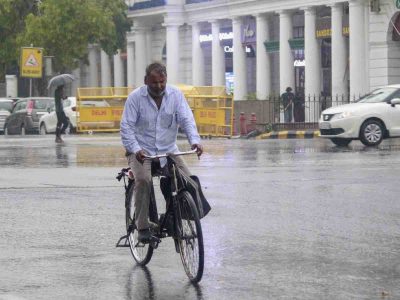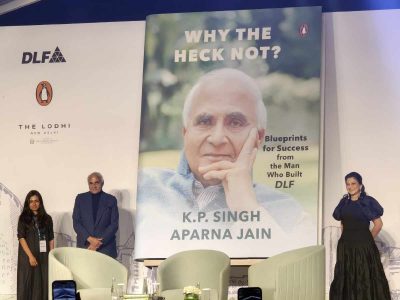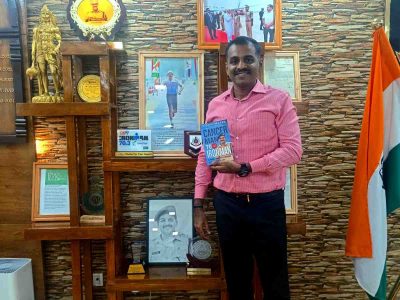In the 19th century, the Brits came to serve the East India Company and in the 20th century the Crown. Fifteen of them did path-breaking research that future generations need to know about.
A lot of sound and fury is being expended these days on the destruction of monuments, especially temples, during the Mughal period. The public has also been made aware of the costs to the Indian economy of British rule, especially due to Congress MP Shashi Tharoor’s fiery presentation at an Oxford University debate. However, beyond the political rhetoric, there is a fact that has almost been lost sight of: the fact that at least a dozen British intellectuals spent decades discovering India’s architecture, languages and dialects as well as traditional culture. This book is about 15 of those devoted Orientalists, though the title does not even hint at the British angle.
James Ferguson, who wrote The History of Indian and Eastern Architecture in 1876, categorized the Pathan style as one of the ‘North of the River Styles’. In his words:
“Since the Pathans were invaders, they had not brought with them masons, artists or architects from their land; but they found among their new subjects talented workers capable of carrying out any design propounded by them. The local masons and sculptors were naturally guided by the traditions then prevailing in India. Despite the difference between the Indian and the Islamic styles, there were two points of resemblance that favoured their fusion.
“One characteristic feature of many Hindu temples as well as mosques was the open court, encompassed by chambers and colonnades, and such temples naturally lent themselves to conversion into mosques and would be the first to be adapted for that purpose by the conquerors.”
Examples of the Pathan styles are the Qutub Minar, the tomb of Iltutmish and the tomb of Sher Shah in Sasaram, Bihar. And it was Ferguson who first pointed out the similarities. Similarly, it was William Jones who first identified Chandragupta Maurya as the king Sandrocottos mentioned by the Greeks. It was Jones in fact who set up the Asiatic Society of Bengal, ‘a unique institution which was to become the fountainhead for oriental studies and research’ over the following two centuries. It was Jones who, after painstakingly learning Sanskrit, declared it to be “perfect than the Greek, more copious than the Latin.”
Then there was James Princep, whose drawings of Varanasi brought the attention of the West to the beauty of India. He drew a map that showed every building in the city, taking two years to complete the task. He reconstructed the Mint where he was posted. He came at a time, in 1823, when the British government was firmly in control and also able to spend large amounts of money for the improvement of major cities. He built a large underground tunnel to drain the swamp on low-lying land, even digging beneath buildings for the purpose. When he was posted to Calcutta, he excavated a canal connecting Hooghly to the Sunderbans.
Charles Wilkins was another Brit whose imagination was charged by his sojourn on the subcontinent and who discovered his true potential on Indian soil. Impressed with the pundits of Benares, he undertook to translate the Mahabharat into English, a task he could not complete. However, the most iconic part of it, the Bhagwad Gita, was published and widely disseminated to libraries and educational institutions across Europe. This was way back in 1784. He also devoted himself to designing a font for the Devanagri script which is used in Sanskrit and 100 other languages.
A similar contribution was made by Nathaniel Brassey Halhed, who did pioneering work by writing on Bengali grammar. About Sanskrit, he said it ‘far exceeds the Greek and Arabic in the regularity of its etymology, and like them has a prodigious number of derivatives from each primary root’. Even after his career went on a downslide and he had to return to England, he write a translation of the Upanishad. His Code of Gentoo Laws became a classic.
This book has many such stories, which is not just a citation of their achievements but tells the story of these gentlemen, their ups and downs, their motivations and often, ill health due to inability to adjust to the tropical climate and food. In today’s political climate, where the Mughals are being threatened with oblivion, it would good for school students about learn how India’s hidden treasures were brought to light, sometimes only to be looted, but also in a true spirit of scholarship.
Forgotten Civilisations: The Rediscovery of India’s Lost History
Rupa and Gautam Gupta
HarperCollins India
Pages 258, Price 400
For more stories that cover the ongoings of Delhi NCR, follow us on:
Instagram: https://www.instagram.com/thepatriot_in/
Twitter: https://twitter.com/thePatriot_in
Facebook: https://www.facebook.com/Thepatriotnewsindia





